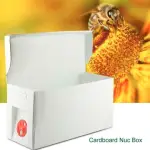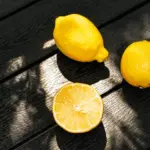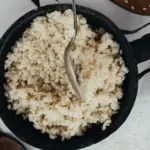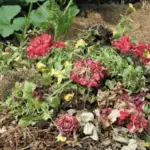Most cardboard is biodegradable and recyclable. But what about putting cardboard in compost? Can you compost cardboard?
The Environmental Protection Agency (EPA) estimates 31 percent of waste in landfills is cardboard. Almost everyone receives boxes in the mail and don’t forget about shoeboxes. The handy boxes protect your shoes from dust and scuff marks on the shelf.

What Types of Cardboard Can You Compost?
Before you start tossing all of your cardboard materials in the compost pile, there are a few that go in the trash.
Cardboard coated with plastic is non-biodegradable. Most dyed cardboard also isn’t compostable, but there are exceptions. Some inks and dyes are chemical-free and will not hurt the compost.
If you see a recycling stamp, it’s usually safe for compost. If in doubt, toss the cardboard in with the rest of your recycling.
You can compost two types of cardboard,
- Corrugated cardboard: You typically find corrugated cardboard is more durable than other types. Most of your shipping and packing boxes are made from compostable materials.
- Flat cardboard: Shoe and cereal boxes are made from thin cardboard, along with juice boxes. Most of this type of cardboard can go into the compost pile but double-check the juice boxes. Some have a plastic coating that can’t go into the compost.
You can also compost wax-coated cardboard, but it takes several months or even years to degrade. It’s often easier to recycle your wax-coated cardboard.

How to Compost Cardboard
Composting cardboard is simple. You can compost cardboard in a pile or bin. Regardless of the method or type of cardboard, you want to cut or rip the material into smaller pieces.
You don’t want to toss a box or large sheet of cardboard into the compost. It takes up too much space and slows down decomposition. Soaking cardboard in warm water will help the material break down faster.
Whether you are starting a new compost pile or adding layers to an existing one, the steps are the same.
Always Create Layers
All healthy compost piles have layers comprised of green and brown materials. Green layers often contain grass clippings, fruit rinds, vegetable scraps, along with cow or horse manure. Your brown layer is made from leaves, twigs, coffee grinds, and wood chips.
The green layer produces nitrogen while the brown one is responsible for calcium.
When you are compositing cardboard, put it in the brown layer. Try to keep the layers around four inches thick. Most people start compositing with a brown layer, but you can start with a green one. The only composting rule you want to follow is to keep alternating the layers.
Keep the Air Flowing
Anytime you add new material to the compost heap, you want to flip or aerate the pile. It aids in decomposition and helps keep the internal temperature up.
You want the internal temperature to be around 130 degrees Fahrenheit.
Using a garden fork or rake, start flipping the compost. The goal is to mix the compost and improve airflow. The microbes and bacteria that break down the cardboard need heat and oxygen to thrive.
Turn your compost pile once every couple of days for a few weeks, before cutting back.

How Long Does It Take for Cardboard to Breakdown?
The type of cardboard determines its decomposition rate, some are faster than others.
Corrugated cardboard breaks down faster. It is one of the strongest types, but it is also the lightest. It typically decomposes in about six months. Flat cardboard is thicker and takes longer to completely breakdown.
Wax-coated cardboard can take over twelve months to decompose in a compost pile.

Are Cardboard Pizza Boxes Compostable?
Most recycling centers do not accept pizza boxes due to grease and food stains. Like all cardboard, pizza boxes break down in landfills, but you can also use them in the garden.
Pizza boxes, cardboard egg cartons, along with paper towel and toilet paper rolls can all go in your compost pile.
Remember, all cardboard items should be shredded into small pieces before going into the compost.

Can You Put Cardboard Directly in the Garden?
Putting cardboard directly in the garden has a few benefits. The sturdy material gradually adds carbon to the soil as it decomposes. The material can also add structure and support to loose soil.
Cardboard can even help prevent weeds from growing.
Another surprising benefit of allowing cardboard to compost in the garden is it attracts earthworms.
The only downside is aesthetics. Not everyone likes how pieces of cardboard look laying between the flowers.

How to Shred Cardboard for Composting?
There isn’t a right or wrong way to shred cardboard. It’s whatever works best for you.
Some thinner pieces of cardboard are easy to rip with your hands, but it’s not practical if you have a large pile of the material. Scissors and other cutting implements are your best option.
Before you start cutting, make sure you remove any staples. You do not want the bits of metal in your compost. Even a small piece can ruin the pile.
The best way to shred cardboard for composting is with water.
Soaking the material in dish soap and warm water softens the fibers, making them easier to tear. Only soak the cardboard for a few minutes. You don’t want it turning into pulp.

Can You Use Cardboard to Make a Compost Bed?
If you only need to keep the compost contained for a season or so, using a cardboard box is a great idea.
It is eco-friendly and inexpensive, especially if the box is lying around your house.
The box should last for about a year before disintegrating, adding carbon to the soil.
Conclusion
You can put cardboard in compost. The material can even go directly into the ground. It’s an excellent source of carbon for garden plants.
Cardboard does take a while to decompose. Some types can take over a year. The material also takes up space in the pile.
It’s not a problem for larger compost piles, but it can be for smaller ones.
In some cases, you may want to choose to recycle over composting cardboard.






